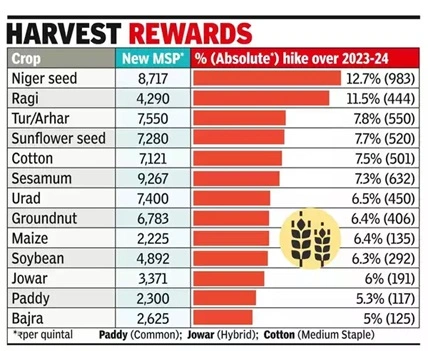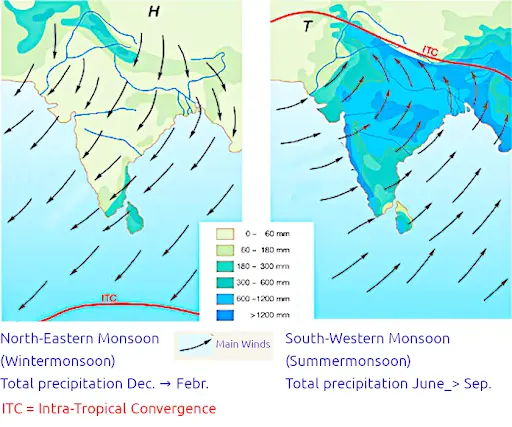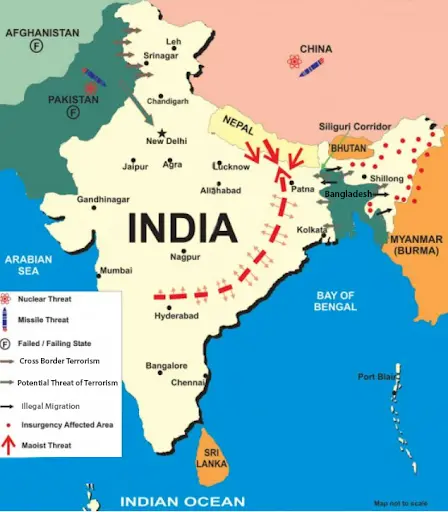Saturday, 22nd June 2024
NEET-NET Crisis
Why in the news?
- Recently, issues such as paper leaks, incorrect results prompting aspirant suicides, and inconsistent grace marks allocation have severely undermined public confidence in the National Testing Agency (NTA).
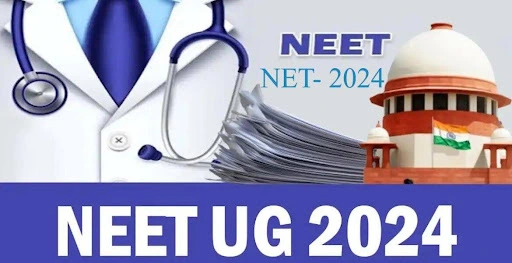
Recent Paper Leaks and Their Impact
- Recent incidents surrounding NEET have exposed serious flaws in its administration.
- Instances of leaked examination papers and the dissemination of incorrect results have not only shattered trust but have also been linked to tragic suicides among aspirants.
- In a concerning development, an unprecedented 67 students scored perfect marks, raising suspicions of systemic manipulation.
- Moreover, over 1,560 students received grace marks without transparent justification, exacerbating doubts about the fairness of assessments conducted by the National Testing Agency (NTA).
- The government's decision to cancel the National Eligibility Test (NET) due to similar issues further compounds concerns about the integrity of these examinations.
Origin of NEET Policy, its Objectives and Implementation Challenges:
- Standardising Educational Competence:
- The implementation of NEET was primarily driven by the necessity to standardise the educational competence of students entering medical colleges.
- Before NEET, there was a noticeable disparity in foundational knowledge of basic sciences like Chemistry, Physics, and Biology among students from different educational backgrounds.
- This variation often resulted in significant differences in the quality of medical graduates, with some students lacking adequate understanding of these critical subjects.
- NEET aimed to establish a minimum standard of competence in the basic sciences for all medical aspirants, regardless of their educational origins.
- Reducing the Number of Entrance Examinations:
- Prior to NEET, India's medical aspirants had to contend with multiple entrance examinations—approximately 46 exams administered by various medical colleges and institutions, each with its unique syllabus, format, and evaluation criteria.
- This proliferation of exams caused considerable stress and confusion for students, who were required to prepare for and appear in numerous tests within a short timeframe.
- NEET sought to consolidate these disparate exams into a single, standardised test, simplifying the admission process, reducing financial and logistical burdens, and ensuring a more straightforward and equitable selection process.
- The government aimed to streamline admissions by implementing a unified entrance examination that would be efficient and less cumbersome for all stakeholders involved.
- Eliminating Capitation Fees:
- NEET also aimed to tackle the widespread practice of capitation fees in private medical colleges.
- Capitation fees are payments made by students to secure admission, often bypassing merit-based selection criteria.
- This practice compromised the quality of medical education and created barriers for economically disadvantaged students seeking admission.
- By basing admissions solely on NEET scores, the policy aimed to curb the discretion of private medical colleges in student selection.
- This merit-based approach was intended to ensure that admissions were granted solely to the most qualified candidates, irrespective of their financial background.
- The elimination of capitation fees was viewed as a crucial step towards promoting transparency and fairness in the admission process, thereby enhancing the credibility of medical education in India.
Challenges in Implementation:
- Initially, in 2013, the Supreme Court suspended the scheme following challenges from private colleges, which argued that NEET's centralised process encroached upon their autonomy.
- However, in 2016, a five-judge bench reinstated NEET, underscoring the necessity of a unified examination system.
- A persistent challenge was the lack of a uniform standard for school education across India.
- Central government schools followed the CBSE syllabus, known for its rigour, while state boards and private schools, including those offering International Baccalaureate (IB) programs, had different curricula.
- This disparity sparked accusations of bias, with NEET's standards perceived to favour students from CBSE backgrounds.
|
Case study: The Opposition of NEET in Tamil Nadu:
|
Necessary Key Reforms to Address the Crisis of NEET:
- Extending the MBBS Degree:
- Consider extending the MBBS degree to six years, including a pre-medical year to standardise knowledge in Zoology, Chemistry, and Physics.
- This approach has historical precedent in India's medical education system, ensuring all students meet essential foundational requirements.
- Decentralising Examinations:
- Implement decentralisation of the examination process, allowing states and universities to conduct their own entrance exams.
- Centralisation under NEET has caused disparities, especially for students from non-CBSE backgrounds.
- State and university-level exams can better align with local curricula, enhancing relevance and fairness.
- Constituting Regional Boards:
- Introduce regional examination boards to standardise exams within specific geographic areas.
- These boards can operate under central guidance while adapting to local educational standards.
- This approach balances national standardisation with local relevance, ensuring comprehensive and equitable assessments.
- Improving School Education:
- Focus on improving the quality of school education nationwide through governance, curriculum reform, and infrastructure enhancement.
- Transition from rote learning to inquiry-based and critical thinking-oriented education.
- Regular curriculum updates should reflect the latest scientific and educational advancements.
Conclusion:
The NEET crisis exposes systemic failures in India's school education system. To resolve this, reforms should focus on improving schools, decentralising exams, and strengthening oversight. These efforts are crucial to restoring confidence, fairness, and integrity in the examination process for all students.
Source: IE
Tamil Nadu hooch tragedy
Why in the news ?
- Recently, in Tamil Nadu's Kallakurichi, at least 38 people have died and around 100 others are in the hospital after drinking spurious liquor, also known as hooch.
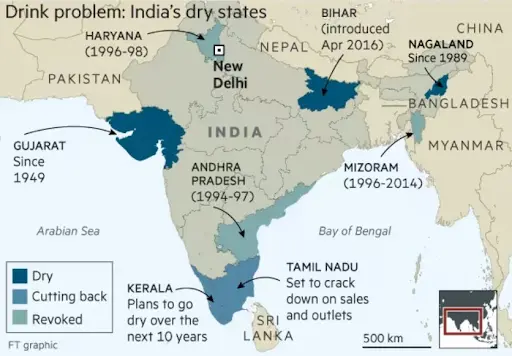
What is the science of Creating Alcohol ?
- Alcohol production relies on two main processes: fermentation and distillation.
- Fermentation:
- Fermentation involves the chemical reaction where yeast or bacteria act on sugars derived from grains, fruits, or sugarcane to produce ethanol, the alcohol found in beverages.
- Alcohol Content Variation: Alcoholic beverages vary in alcohol content:
- Beer typically contains around 5% alcohol by volume.
- Wine ranges from approximately 12% alcohol by volume.
- Distilled spirits, such as whiskey and vodka, have alcohol contents typically around 40% or higher.
- Role of Distillation:
- Distillation is crucial, particularly for beverages with higher alcohol content.
- As more sugars are converted into alcohol during fermentation, the environment can become toxic for the fermenting microorganisms.
- Distillation Process:
- Distillation separates alcohol from the fermented mixture by:
- Evaporating the liquid to create alcohol vapour.
- Condensing the vapour back into liquid form.
- This process concentrates the alcohol, ensuring a more potent final product compared to the original fermented mixture.
- Distillation separates alcohol from the fermented mixture by:
Adverse effect of Ethanol on Human Health:
- Ethanol Metabolism:
- Ethanol (C2H5OH) is metabolised in the liver and stomach by alcohol dehydrogenase (ADH) and aldehyde dehydrogenase (ALDH).
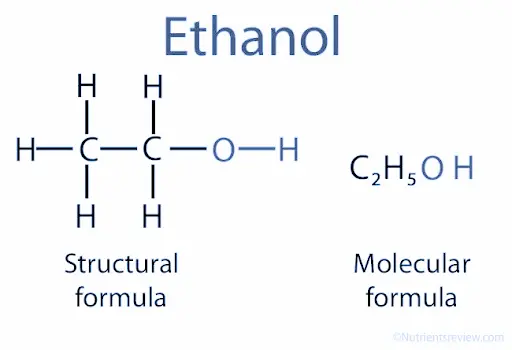
- Acetaldehyde Effects:
- The harmful effects of alcohol consumption, including hangovers and cancer risks, stem largely from acetaldehyde.
- WHO's Alcohol Warning:
- Contrary to common belief, the World Health Organization (WHO) asserts that no level of alcohol consumption is safe for health.
What is Hooch/Spurious Liquor ?
- About Hooch:
- Hooch, derived from the Hoochinoo tribe of Alaska known for strong liquor, refers to poor quality alcohol lacking rigorous quality control, often produced in crude, homemade settings.
- Production Process:
- Hooch, like all alcohol, is made through fermentation and distillation. It involves distilling a fermented mixture of local yeast, sugar, or fruit waste.
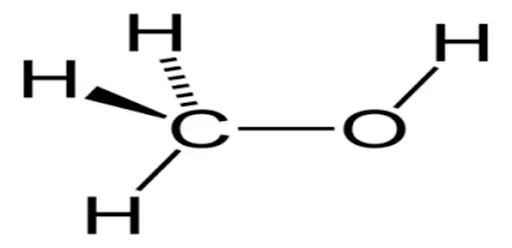
- Risks of Methanol:
- During distillation, both ethanol (boiling point 78.37 °C) and highly toxic methanol (boiling point 64.7 °C) can concentrate. Improper distillation can result in high methanol levels in the final product.
- Health Hazards:
- High methanol concentrations in hooch can cause severe toxicity, including cerebral edema, haemorrhage, and death. Differentiating safe hooch from toxic variants is challenging prior to consumption
Regulation of Methanol in India:
- Inclusion in Hazardous Chemical Rules:
- Methanol is listed in Schedule I of the Manufacture, Storage, and Import of Hazardous Chemical Rules 1989, indicating its regulatory control due to its hazardous nature.
- Food Safety Regulations:
- Under the Food Safety and Standards (Alcoholic Beverages) Regulations 2018, specific limits for methanol content in various liquors are stipulated.
- For example, coconut feni must have methanol "absent," while country liquor can contain up to 50 grams per 100 litres.
- Quality Standards:
- Indian Standard (IS 517) dictates the methods for assessing methanol quality.
- The Tamil Nadu Denatured Spirit, Methyl Alcohol, and Varnish (French Polish) Rules 1959 govern how methanol packaging and signage should be handled to ensure safety and compliance.
How can Methanol Poisoning be Treated?
- Administration of Ethanol:
- Ethanol, administered in pharmaceutical grade under medical supervision, competes with methanol for the alcohol dehydrogenase (ADH) enzymes in the body.
- By doing so, ethanol prevents methanol from being metabolised into toxic formaldehyde and subsequently into formic acid, which is responsible for the severe effects of methanol poisoning.
- This competition prevents methanol from being metabolised into toxic formaldehyde, thereby reducing its harmful effects.
- Use of Fomepizole:
- An alternative treatment is the administration of fomepizole, an antidote that inhibits the action of ADH enzymes.
- By slowing down ADH activity, fomepizole helps the body metabolise methanol into formaldehyde at a slower rate.
- This allows the body more time to excrete formaldehyde safely, thereby preventing severe complications such as cerebral edema and death.
Source: IE
Russia-North Korea pact
Why in the news ?
- The recent visit of Russia's President Vladimir Putin to Pyongyang drew attention due to a consequential agreement between Russia and North Korea committed to swiftly provide military assistance if either nation faces armed aggression.
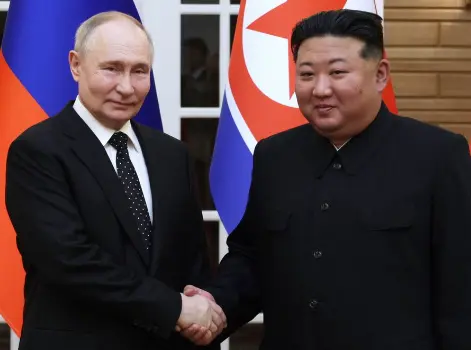
Historical Context:
- Post-World War II Context:
- The Soviet Union aimed to establish a communist regime in Korea.
- The USSR provided significant military aid to North Korea’s founder, Kim Il Sung, during the Korean War.
- Post-war support from the USSR and China included substantial military and other aid to North Korea.
- 1961 Russo-North Korea Treaty:
- The Treaty of Friendship, Cooperation, and Mutual Assistance included a mutual defence agreement.
- Post-Soviet Union Period:
- Relations deteriorated after the Soviet Union dissolved in 1991, voiding the treaty.
- Early 2000s Reconnection:
- Under Putin, Russia moved closer to North Korea despite not supporting its nuclear ambitions initially.
- Russia supported sanctions against North Korea aimed at curbing its nuclear capabilities.
- Post-2022 Dynamics:
- After Russia’s invasion of Ukraine, Russia faced international isolation.
- Russia and North Korea solidified their alliance against the Western liberal order.
What about the Pact:
- Scope of Cooperation:
- The pact includes cooperation on a wide range of issues, including mutual military support and unspecified technological assistance.
- Mutual Defence Provision:
- Article 4 of the pact states that in the event of an armed invasion, the other side shall provide military and other assistance without delay, following Article 51 of the UN Charter and respective national laws.
- Technological Assistance:
- Technological assistance is crucial for North Korea, which currently has nuclear weapons but lacks advanced missile guidance systems and other technologies for long-range nuclear weapons.
Strategic Implications:
- Direct Threat to South Korea and Japan:
- Both countries view the pact as a significant security threat due to North Korea’s nuclear capabilities, now bolstered by Russia's support.
- Potential Arms Race:
- Japan is reconsidering its pacifist stance and enhancing its military capabilities. South Korea is exploring new defence strategies, which might include increasing arms exports.
- Strengthening of US Alliances:
- In response to rising regional security concerns, South Korea and Japan are likely to deepen their military and strategic alliances with the United States.
- NATO and Global Security:
- The pact raises alarms among NATO allies and other global stakeholders, leading to reassessments of existing security strategies and commitments.
- Nuclear Proliferation Concerns:
- Increased collaboration between Russia and North Korea may enhance North Korea’s nuclear and missile capabilities, challenging global non-proliferation efforts.
- Global Strategic Repercussions:
- The pact sets a precedent for authoritarian regimes aligning against Western liberal orders, influencing geopolitical strategies and alliances beyond Asia.
Way Forward:
- Enhanced Diplomatic Engagement and Dialogue:
- Engage in robust diplomatic efforts to mitigate tensions and clarify the intentions behind the Russia-North Korea pact.
- Encourage multilateral dialogues involving key stakeholders such as the United States, South Korea, Japan, and other concerned parties to foster mutual understanding and reduce the risk of miscalculation.
- Reinforcement of Regional Security Mechanisms:
- Strengthen existing regional security mechanisms, particularly alliances with the United States, underpinned by treaties such as the Mutual Defense Treaty with Japan and the mutual defence commitments with South Korea.
|
UPSC Civil Services Examination, Previous Year Questions (PYQs) Mains: Q:1 What is the significance of Indo-US defence deals over Indo-Russian defence deals? Discuss with reference to stability in the Indo-Pacific region. (2020) |
Source: TH
GM Crops promise Food Security
Why in the News?
- A new "gene revolution" is being promoted as a solution to increasing global food demand and the impact of climate change on agriculture.
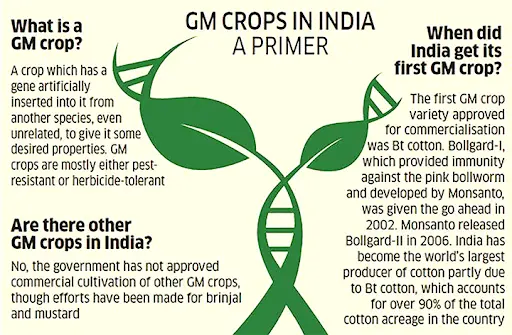
What does the World Economic Forum (WEF) say?
- The World Economic Forum (WEF) advocates for genetically modified (GM) technology, viewing it as crucial for ensuring food security for a global population projected to reach 10 billion by 2050.
- Research efforts are focused on developing new strains of staple crops such as rice, maize, wheat, potato, and cassava, aiming to enhance their resilience to extreme weather conditions and emerging climate-induced diseases.
- The latest advancements in bioengineering technologies can help plants and soils capture and store atmospheric carbon, contributing to the reduction of planet-heating carbon levels.
- Additionally, projects are underway to optimise photosynthesis in crops like maize and rice, with the goal of improving yields and reducing atmospheric carbon.
Industrial-Scale GMOs Perpetuate Climate Change:
- Critics argue that GM crops maintain an "agro-industrial system" responsible for significant greenhouse gas emissions.
- Current food systems contribute to about one-third of global greenhouse gas emissions.
- GMOs often involve large-scale monocultures that require substantial amounts of artificial fertilisers, pesticides, and irrigation.
- This system is criticised for being energy-intensive and unsustainable, primarily benefiting large agro-industrial companies that dominate the seed, food, pesticide, and fertiliser markets.
Present Scenario:
- Over half of harvested cropland in the US uses genetically modified seeds.
- Despite the widespread adoption of GM crops, food insecurity remains prevalent, with 250 million people in nearly 60 countries facing crisis-level food insecurity.
- Successful campaigns, such as those in the Philippines, have led to production moratoriums on certain GM crops due to health and ecological concerns.
Are Non-GM Ecological Crops Also a Food Security Solution?
- Resistance to GMOs persists due to concerns about their safety and ecological impact.
- Non-GM ecological approaches face challenges, primarily because most research funding originates from large agri-biotech companies.
- Ecological, non-GM crops aim to produce toxic-free food and nurture biodiverse ecosystems capable of resisting and mitigating climate change.
- Ongoing development of ecological, non-GM seed, food, and nutrition systems is underway to address food security in a warming world.
Note: India has approved the commercial cultivation of only one GM crop, Bt cotton. No GM food crop has been approved for commercial cultivation in the country.
Way forward:
- Enhanced Regulatory Oversight and Support for Ecological Practices:
- Strengthen regulations to ensure the safe development, testing, and deployment of GM crops while simultaneously supporting research and development of non-GM ecological farming practices.
- Public Awareness and Inclusive Research Funding:
- Launch comprehensive public education campaigns to inform communities about the benefits and risks of GM and non-GM crops, promoting informed decision-making.
|
UPSC Civil Services Examination, Previous Year Questions (PYQs) Mains: Q:1 What are the present challenges before crop diversification? How do emerging technologies provide an opportunity for crop diversification? (2021) |
Source: IE
‘Blood Money’ in Islamic Law
Why in the news?
- The Indian Government has authorised the transfer of $40,000 for initial discussions on securing Nimisha Priya's release from a Yemeni prison.
- Priya's mother is currently in Yemen, seeking to commute her death sentence by offering "blood money" to the family of the deceased.
About Nimisha Priya’s Case:
- Priya, a nurse who relocated to Yemen in 2008, married Tomy Thomas in 2011, and later returned to Yemen, where she encountered abuse and exploitation from Talal Abdo Mahdi.
- This situation culminated in Mahdi's death and Priya's subsequent arrest. The $40,000 payment is intended to start negotiations for Priya's release.
- To commute the death penalty, Priya's family may need to gather between $300,000 to $400,000.
- The 'Save Nimisha Priya International Action Council' is actively fundraising to meet this financial requirement.
What is Blood Money?
- According to Islamic law, victims of crimes, particularly in cases of murder, have the authority to decide on the punishment of the criminals.
- This principle applies specifically to the families of the victims.
- While murder typically incurs the death penalty, the victim's family, known as heirs, have the option to "forgive" the perpetrator in exchange for monetary compensation.
- This compensation is known as Diyya or "blood money" and finds its basis in the Holy Quran.
- The concept of blood money is applicable in cases of unintentional homicide (Qatl Khata) or accidental death, as well as in situations involving bodily injury or harm caused by negligence or unintentional actions.
The implications of blood money in Islamic law:
- Encouragement of Forgiveness:
- It allows the victim's family to choose to forgive the perpetrator in exchange for compensation, reflecting mercy and the importance of reconciliation.
- Flexible Compensation:
- Unlike rigidly defined amounts, Islamic scriptures do not specify a fixed sum for blood money.
- Instead, the compensation is typically determined through negotiations between the families involved or their representatives.
- Negotiation Process:
- This negotiation involves discussions between the perpetrator's family and the victim's family, seeking a resolution that both parties find acceptable.
- Minimum Compensation in Some Countries:
- While the Quran does not prescribe specific amounts, certain Islamic countries have established minimum compensation thresholds.
- These standards aim to ensure fairness and consistency in resolving cases involving blood money.
The significance of blood money in Islamic law:
- Encouragement of Forgiveness:
- Forgiveness from the victim's family is deeply valued and praised in Islam.
- By accepting blood money, the family of the victim demonstrates mercy and compassion towards the perpetrator or their family.
- Prevention of Retaliation:
- Blood money serves as a mechanism to prevent cycles of vengeance or retaliation (known as Qisas).
- Instead of seeking revenge through retributive justice, accepting blood money allows for the resolution of disputes in a peaceful and reconciliatory manner.
- Promotion of Reconciliation:
- The concept of blood money promotes reconciliation between conflicting parties.
- By negotiating and agreeing on a compensation amount, both the victim's family and the perpetrator's family can reach a mutual understanding and closure.
Source: IE
The Public Examinations (Prevention of Unfair Means) Bill
Why in the news?
- Amidst recent controversies, both NEET UG-2024 and UGC-NET 2024 have faced scrutiny.
- UGC-NET was cancelled on June 19 due to concerns over exam integrity, marking the first cancellation under the new Public Examinations (Prevention Of Unfair Means) Act passed in February 2024.
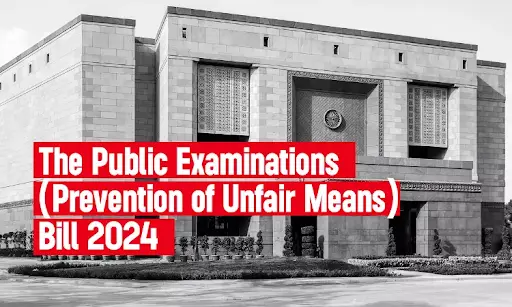
Public Examinations (Prevention Of Unfair Means) Act 2024:
- About:
- The Indian Parliament enacted the Public Examinations (Prevention Of Unfair Means) Act in February 2024 to enhance transparency, fairness, and credibility in public examinations by preventing unfair practices.
- Wide scope of application:
- This legislation marks the first federal effort to address unfair practices in public examinations across India. It provides flexibility for future inclusion of other agencies through government notifications.
- Protection of Candidates:
- The Act ensures that bona fide candidates participating in public examinations are exempt from its provisions.
- Defaulting candidates are not penalised under the Act, but appropriate actions are taken by the respective public examination authorities.
Unfair means in an examination has been defined:
- Section 3 of the Act, detailing over 15 actions that constitute unfair practices in public examinations for monetary or wrongful gain. These actions include:
- Leaking question papers or answer keys, and involvement in such leaks.
- Unauthorised access to question papers or Optical Mark Recognition (OMR) response sheets.
- Tampering with answer sheets, including OMR sheets.
- Unauthorised persons providing solutions during exams.
- Direct or indirect assistance to candidates.
- Tampering with documents used for shortlisting or ranking candidates.
- Tampering with computer systems or networks.
- Creating fraudulent websites.
- Conducting fake exams and issuing counterfeit admit cards or offer letters for cheating or monetary gain.
- Comprehensive Coverage:
- The Act spans 19 sections across six chapters, comprehensively addressing all aspects of preventing unfair means in public examinations.
- It provides detailed definitions that encompass various unfair practices such as leaks of question papers, candidate assistance, breaches in security, and manipulation of computer systems.
- Additionally, the Act addresses specifics like manipulation of seating arrangements to ensure integrity in examinations.
- Punishments:
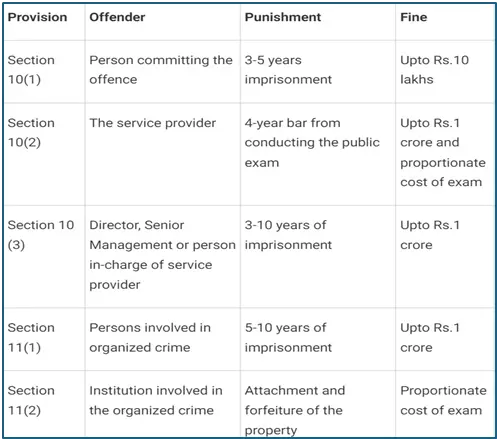
-
- Section 9 of the Act mandates that all offences shall be cognizable, non-bailable, and non-compoundable, allowing for arrest without a warrant and requiring a magistrate's discretion for bail eligibility.
- Public Examination Defined:
- Section 2(k) defines a public examination as any examination conducted by a public examination authority listed in the Act's Schedule or designated by the Central Government through notification, with provisions for adding new authorities via notification.
- Power to Refer Investigations:
- The Act grants the Central Government authority to refer cases under its purview to a Central Investigating Agency for prompt and careful resolution.
- Designation of Public Servants:
- Officials of public examination authorities are designated as public servants under the Act, ensuring accountability and transparency.
- This designation allows for appropriate administrative action according to the authority's service rules and procedures.
- Status of Organized Crime:
- Section 11 of the Act addresses organised crime related to public examinations, imposing penalties ranging from 5 to 10 years imprisonment and fines up to ₹1 crore
Criticism and Way Forward:
- Rescheduling Cancelled Exams:
- The Act lacks a specified timeframe for rescheduling exams cancelled due to unfair means, impacting candidates' merit and preparation.
- Recommendations include conducting rescheduled exams within six months to ensure fair opportunities for all candidates.
- Training and Eligibility of Invigilators:
- Inefficient exam supervision due to inadequate training of invigilators and administrative officers leaves room for malpractice.
- Addressing this requires setting clear eligibility criteria for invigilators and conducting intensive training programs and workshops to equip them with necessary skills.
- Specialized Investigation Authority:
- Designating officers of at least Deputy Superintendent of Police (DSP) rank to investigate exam malpractice may not suffice given the scale and impact.
- Establishing a dedicated investigation and regulation authority can ensure systematic handling of such cases, preserving exam integrity and candidates' trust.
- Harnessing Technology and AI
- Underutilization of technology in exam processes allows offenders to exploit gaps.
- Implementing electronic question paper-setting, centralised question banks, and AI-enhanced evaluation can streamline operations, enhance security, and minimise the risk of malpractice
Source: TH
Iberian Lynx
- Recently, the Iberian lynx (Lynx pardinus), one of the rarest cat species globally, has improved its conservation status from 'endangered' to 'vulnerable' on the International Union for Conservation of Nature (IUCN) Red List.
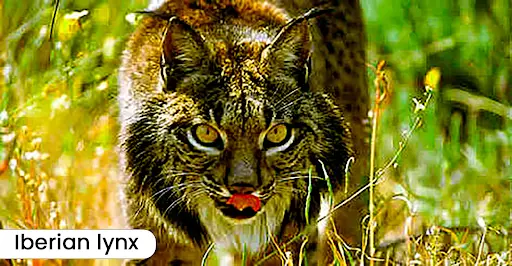
- Since 2001, the population of mature Iberian lynxes has increased significantly from 62 to 648 in 2022.
- Presently, there are more than 2,000 lynxes, including young individuals, thriving across Spain and Portugal.
Iberian Lynx:
About:
- The Iberian lynx is one of two carnivore species endemic to Europe (the other being European mink, Mustela lutreola).
Characteristic Features:
- It has the most heavily spotted coat among all lynx species.
- The coat is sparse, short, and coarse, with a base colour of bright yellowish red or tawny, adorned with dark brown or black spots.
- White underparts.
- Sexual dimorphism is evident, with males being larger and heavier than females.
Habitat:
- Prefers Mediterranean forests with native oaks and dense undergrowth.
- Thrives in areas with a mix of dense scrub for shelter and open pasture for hunting.
- Found exclusively in southwest Spain on the Iberian Peninsula, west of the Pyrenees mountains.
Threats:
- Habitat destruction and alteration due to agricultural and industrial development.
- Conversion of native Mediterranean forest to plantations lacking undergrowth.
- Direct persecution including vehicular accidents, illegal hunting with dogs, and traps set for other predators.
Conservation Status:
- Classified as Endangered (EN) by the International Union for Conservation of Nature (IUCN).
- Downgraded from Critically Endangered to Endangered in 2015.
- Protected under Appendix II of the Convention on International Trade in Endangered Species (CITES).
A New Diatom Genus Discovered
Why in the news ?
- Researchers (Agharkar Research Institute, Pune) have identified a new genus of Gomphonemoid diatom, named Indiconema, in the clean waters of the Eastern Ghats.

- The study reports the presence of Indiconema species in both the Eastern and Western Ghats.
- This unique organism differs from its relatives by possessing a pore field at both ends (head and foot pole) instead of just the foot pole.
- Researchers suggest that based on morphological features, Indiconema is related to Afro Cymbella, a genus endemic to East Africa. Early studies noted similarities between Gomphonema species from India and those from East Africa and Madagascar.
Diatoms:
- Diatoms are the tiny, microscopic algae and workhorses of the aquatic ecosystem.
- They are responsible for producing 25% of the world’s oxygen.
- They are chief ‘producers’ in the oceans and form the base of the aquatic food chain.
- They serve as excellent indicators of water quality due to their sensitivity to chemical changes.
- India has nearly 6,500 diatom taxa, of which 30% are endemic.
- Diverse biogeographic zones, from freshwater to marine environments, sea level to high mountains, and alkaline lakes to acidic swamps in India, provide a plethora of habitats for diatoms to thrive.
- The Eastern and Western Ghats, with their unique physiographic, edaphic, and climatic gradients, host distinct diatom communities specific to these geographical locations.
Source: (PIB)
Striped caecilian
Why in the News?
- A limbless amphibian, the striped caecilian (Ichthyophis spp), was newly discovered in Kaziranga National Park and Tiger Reserve (1,307.49 sq. km) during a recent herpetofauna survey conducted by Assam’s wildlife officials.
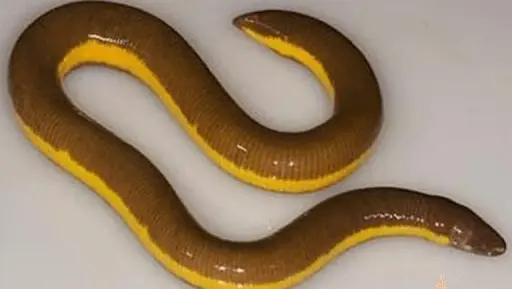
|
Herpetofauna:
|
About Striped Caecilian:
- The Striped Caecilian (Ichthyophis spp.) is a limbless amphibian from the family Ichthyophiidae.
- Due to their elongated, cylindrical bodies and lack of limbs, caecilians are frequently confused with snakes or worms.
- They inhabit primarily tropical regions across Africa, Asia, and the Americas.
- Their habitats typically include underground burrows or moist soil environments.
Key features of the Striped Caecilian include:
- They possess smooth, cylindrical bodies adorned with a ringed or striped pattern, earning them the name "striped."
- Caecilians are primarily fossorial (burrowing), spending much of their lives underground or in leaf litter, which makes them elusive and challenging to observe.
- They are carnivorous, feeding on small invertebrates found in soil and leaf litter.
- Caecilians typically have poor eyesight and rely heavily on chemoreception to detect chemicals in their environment, aiding in prey location.
- Caecilians exhibit unique reproductive strategies, including both live births and egg laying. Some species display parental care, with adults guarding eggs or young offspring
|
UPSC Civil Services Examination, Previous Year Questions (PYQs) Prelims: Q:1 The organisms “Cicada, Froghopper and Pond skater are:(2024)
Answer:C |
Source: TH
India – Bangladesh Bilateral Relationship
Why in the news ?
- Recently, Bangladesh’s Prime Minister Sheikh Hasina is on a two-day visit to India.

How Have the Ties Between India-Bangladesh Flourished?
Historical Ties:
- The foundation of India’s relationship with Bangladesh was established during the 1971 Bangladesh Liberation War, with India providing crucial military and material support for Bangladesh's independence from Pakistan.
- However, relations deteriorated within a few years as military regimes took control in Bangladesh, leading to rising anti-India sentiment in the mid-1970s over issues such as boundary disputes, insurgency, and water sharing.
- This instability persisted for several decades until Sheikh Hasina came to power in 1996, marking a new chapter in bilateral ties with a treaty on the sharing of Ganga waters.
- Since then, India and Bangladesh have developed cooperation in various areas including trade, energy, infrastructure, connectivity, and defence.
Economic Cooperation:
- Bangladesh has become India’s largest trade partner in South Asia, with bilateral trade reaching USD 15.9 billion in FY 2022-23, USD 18 billion in 2021-2022.
- It is up from USD 10.8 billion in 2020-21, though there was a dip in 2022-23 due to the Covid-19 pandemic and the Russia-Ukraine War.
- India is also the second biggest trade partner of Bangladesh, with exports amounting to USD 2 billion in Indian markets.
- In 2022, both nations completed a joint feasibility study on a Comprehensive Economic Partnership Agreement (CEPA).
- The CEPA is particularly significant as Bangladesh is set to lose its Least Developed Country (LDC) status after 2026, which will result in the loss of its duty-free and quota-free market access in India.
- Bangladesh aims to finalise a Free Trade Agreement (FTA) with India and also pursue the China-backed Regional Comprehensive Economic Partnership (RCEP), a dual approach that raises concerns for India
Infrastructure:
- Since 2010, India has extended Lines of Credit to Bangladesh worth over USD 7 billion.
- India and Bangladesh resolved long-standing issues, including the Land Boundary Agreement (LBA) in 2015 and a maritime dispute over territorial waters.
- In 2023, India and Bangladesh inaugurated the Akhaura-Agartala Rail Link, connecting Bangladesh and the northeast through Tripura. This link provides India access to Chattogram and Mongla ports in Bangladesh for cargo movement.
- This rail link is expected to boost small-scale industries and development in Assam and Tripura.
- The BIMSTEC Master Plan for Transport Connectivity aims to connect major transport projects in India, Bangladesh, Myanmar, and Thailand, establishing a shipping network.
- India will focus on the Matarbari Port, 100 km from Tripura, being built by Bangladesh, creating an industrial corridor connecting Dhaka and Northeast India.
Energy:
- In 2018, Russia, Bangladesh, and India signed a memorandum on cooperation for the Rooppur Nuclear Power Plant project, Bangladesh's first nuclear power reactor.
- Bangladesh imports 1160 MW of power from India in 2022-2023.
- Projects like the Maitree Super Thermal Power Plant and India-Bangladesh Friendship Pipeline are key initiatives.
Defence Cooperation:
- India and Bangladesh share a 4096.7 km border, the longest land boundary India shares with any neighbour.
- The states of Assam, West Bengal, Mizoram, Meghalaya, and Tripura share borders with Bangladesh.
- The two countries conduct joint exercises: Army (Exercise Sampriti) and Navy (Exercise Bongo Sagar).
Multilateral Cooperation:
- India and Bangladesh engage in regional cooperation through multilateral forums such as SAARC (South Asian Association for Regional Cooperation), BIMSTEC (Bay of Bengal Multi-Sectoral Technical and Economic Cooperation), and the Indian Ocean Rim Association (IORA).
Cultural Cooperation:
- Cultural exchanges are facilitated through the Indira Gandhi Cultural Centre and Indian Cultural Centre in Dhaka.
- Programs in arts, dance, and language promote people-to-people contacts.
|
PM Sheikh Hasina’s visit to India:
|
What are the Points of Tensions Between India and Bangladesh?
Sharing of Transboundary River Waters:
- India and Bangladesh share 54 common rivers, but only two treaties have been signed: the Ganga Waters Treaty and the Kushiyara River Treaty.
- Other major rivers, such as the Teesta and Feni, are still under negotiation.
Illegal Migration:
- The issue of illegal migration from Bangladesh to India, including both refugees and economic migrants, remains a significant concern.
- This influx strains resources and security in Indian border states.
- The problem has intensified with Rohingya refugees entering India through Bangladesh.
- The National Register of Citizens (NRC) aimed at curbing such migration has raised concerns in Bangladesh.
- Bangladesh seeks Indian support in persuading Myanmar to take back the Rohingyas who have taken refuge in Bangladesh.
Drug Smuggling & Trafficking:
- There have been numerous incidents of cross-border drug smuggling and trafficking.
- Humans, especially children and women, are trafficked, and various animal and bird species are poached through these borders.
Growing Chinese Influence in Bangladesh:
- Bangladesh is an active partner in the Belt and Road Initiative (BRI), which India is not a part of.
- China's increasing involvement with Bangladesh could potentially undermine India's regional standing and impede its strategic aspirations
PM Sheikh Hasina’s visit to India discussion: Controversy on the Teesta Water Dispute
- Background:
- The Teesta River originates in the Pauhunri mountain of Sikkim, flows through West Bengal, and enters Bangladesh, joining the Brahmaputra.
- It is the second-largest river in West Bengal after the Ganga, making it crucial for both West Bengal and Bangladesh.
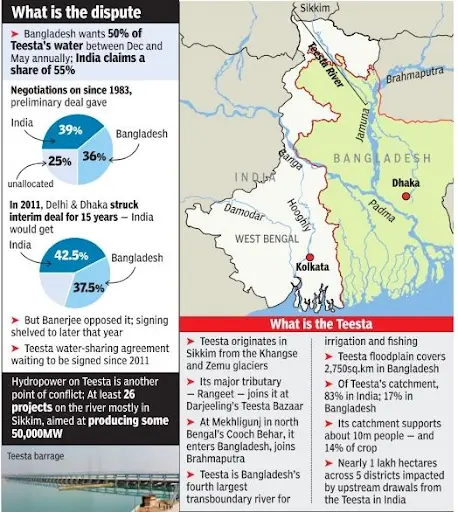
- Historical Context:
- India and Bangladesh have been negotiating the sharing of Teesta waters since the early 1980s.
- A water-sharing agreement was nearly signed in 2011 during Prime Minister Manmohan Singh's visit to Bangladesh, but it was halted due to last-minute objections by West Bengal's Chief Minister Mamata Banerjee.
- Recent Developments:
- In 2015, Prime Minister Narendra Modi visited Dhaka, accompanied by Mamata Banerjee, and expressed confidence in finding a fair solution.
- Despite efforts, the issue remains unresolved. In a recent interview, Prime Minister Hasina emphasised the need for India to be more accommodating to resolve the dispute.
- Current Status:
- Bangladesh seeks an equitable share of the Teesta waters to ensure sufficient water flow during the dry season.
- India’s internal political dynamics, particularly the stance of the West Bengal government, play a significant role in the negotiations.
- Importance of Teesta Waters :
- The Teesta River is vital for irrigation and water supply in both countries. Sheikh Hasina recently urged India to show greater flexibility to resolve the issue.
Way Forward:
- Joint Task Forces:
- Establish joint task forces comprising law enforcement agencies from both countries to effectively combat cross-border drug smuggling and human trafficking.
- Shared intelligence and coordinated operations can disrupt illegal networks.
- Smart Border Management:
- Implement smart border management solutions that utilise Artificial Intelligence (AI) and data analytics.
- These technologies can streamline cross-border movements while ensuring security and efficiency.
- Digital Connectivity Corridor:
- Establish a digital connectivity corridor between the two countries, focusing on high-speed internet connectivity, digital services, and e-commerce.
- This initiative can create new avenues for trade, collaboration, and technological exchange.
|
UPSC Civil Services Examination, Previous Year Question (PYQ) Prelims Q:1 With reference to river Teesta, consider the following statements: (2017)
Which of the statements given above is/are correct?
Ans: (b) Mains Q:1 Analyze internal security threats and transborder crimes along Myanmar, Bangladesh and Pakistan borders including Line of Control (LoC). Also discuss the role played by various security forces in this regard. (2018) |
Source: LM
Practice Questions - Current Affairs 15-06-2024
Q1. The known forces of nature can be divided into four classes, viz. gravity, electromagnetism, weak nuclear force, and strong nuclear force. With reference to them, which one of the following statements is not correct?
(a) Gravity is the strongest of the four
(b) Electromagnetism acts only on particles with an electric charge
(c) Weak nuclear force causes radioactivity
(d) Strong nuclear force holds protons and neutrons inside the nucleus of an atom
Q2. Due to improper/indiscriminate disposal of old and used computers or their parts, which of the following are released into the environment as e-waste?
- Beryllium
- Cadmium
- Chromium
- Heptachlor
- Mercury
- Lead
- Plutonium
Select the correct answer using the codes given below:
(a) 1, 3, 4, 6 and 7 only
(b) 1, 2, 3, 5 and 6 only
(c) 2, 4, 5 and 7 only
(d) 1, 2, 3, 4, 5, 6 and 7
Q3. The efforts to detect the existence of Higgs boson particle have become frequent news in the recent past. What is/are the importance of discovering this particle?
- It will enable us to understand as to why elementary particles have mass.
- It will enable us in the near future to develop the technology of transferring matter from one point to another without traversing the physical space between them.
- It will enable us to create better fuels for nuclear fission.
Select the correct answer using the codes given below.
(a) 1 only
(b) 2 and 3 only
(c) 1 and 3 only
(d) 1, 2 and 3
Q4. Recombinant DNA technology (Genetic Engineering) allows genes to be transferred
- Across different species of plants
- From animals to plants
- From microorganisms to higher organisms
Select the correct answer using the codes given below.
(a) 1 only
(b) 2 and 3 only
(c) 1 and 3 only
(d) 1, 2 and 3
Q5. Mycorrhizal biotechnology has been used in rehabilitating degraded sites because mycorrhiza enables the plants to
- resist drought and increase absorptive area
- tolerate extremes of pH
- resist disease infestation
Select the correct answer using the codes given below.
(a) 1 only
(b) 2 and 3 only
(c) 1 and 3 only
(d) 1, 2 and 3
Q6. Which of the following statements is/are correct?
- Viruses lack enzymes necessary for the generation of energy
- Viruses can be cultured in any synthetic medium.
- Viruses are transmitted from one organism to another by biological vectors only
Select the correct answer using the codes given below.
(a) 1 only
(b) 2 and 3 only
(c) 1 and 3 only
(d) 1, 2 and 3
Q7. With reference to the role of biofilters in Recirculating Aquaculture System, consider the following statements:
- Biofilters provide waste treatment by removing uneaten fish feed.
- Biofilters convert ammonia present in fish waste to nitrate.
- Biofilters increase phosphorus as nutrient for fish in water.
How many of the statements given above are correct?
(a) Only one
(b) Only two
(c) All three
(d) None
Q8. Consider the following pairs:
Objects in space: Description
- Cepheids: Giant clouds of dust and gas in space
- Nebulae: Stars which brighten and dim periodically
- Pulsars: Neutron stars that are formed when massive stars run out of fuel and collapse
How many of the above pairs are correctly matched?
(a) Only one
(b) Only two
(c) All three
(d) None
Q9. Consider the following statements:
- Ballistic missiles are jet-propelled at subsonic speeds throughout their flights, while cruise missiles are rocket-powered only in the initial phase of flight.
- Agni-V is a medium-range supersonic cruise missile, while BrahMos is a solid-fuelled intercontinental ballistic missile.
Which of the statements gin above is/are correct?
(a) 1 only
(b) 2 only
(c) Both 1 and 2
(d) Neither 1 nor 2
Q10. Consider the following statements:
- Other than those made by humans, nanoparticles do not exist in nature.
- Nanoparticles of some metallic oxides are used in the manufacture of some cosmetics.
- Nanoparticles of some commercial products which enter the environment are unsafe for humans.
Which of the statements given above is/are correct?
(a) 1 only
(b) 3 only
(c) 1 and 2
(d) 2 and 3
Q11. Consider the following statements:
DNA Barcoding can be a tool to:
- assess the age of a plant or animal.
- distinguish among species that look alike.
- identify undesirable animal or plant materials in processed foods.
Which of the statements given above is/are correct?
(a) 1 only
(b) 3 only
(c) 1 and 2
(d) 2 and 3
Q12. Consider the following
- Carbon monoxide
- Nitrogen oxide
- Ozone
- Sulphur dioxide
Excess of which of the above in the environment is/are cause(s) of acid rain?
(a) 1, 2 and 3
(b) 2 and 4 only
(c) 4 only
(d) 1, 3 and 4
Q13. With reference to polyethylene terephthalate, the use of which is so widespread in our daily lives, consider the following statements:
- Its fibres can be blended with wool and cotton fibres to reinforce their properties.
- Containers made of it can be used to store any alcoholic beverage.
- Bottles made of it can be recycled into other products.
- Articles made of it can be easily disposed of by incineration without causing greenhouse gas emissions.
Which of the statements given above are correct?
(a) 1 and 3
(b) 2 and 4
(c) 1 and 4
(d) 2 and 3
Q14. Consider the following:
- Aarogya Setu
- CoWIN
- Digi Locker
- DIKSHA
How many of the above are built on top of open-source digital platforms?
(a) Only two
(b) Only three
(c) All four
(d) None
Q15. With reference to Web 3.0, consider the following statements:
- Web 3.0 technology enables people to control their own data.
- In Web 3.0 world, there can be blockchain based social networks.
- Web 3.0 is operated by corporation rather than users collectively.
How many of the statements given above are correct?
(a) Only 1
(b) Only 2
(c) All three
(d) None
Q16. With reference to "Software as a Service (SaaS)”, consider the following statements:
- SaaS buyers can customise the user interface but cannot change data fields.
- SaaS users can access their data through web browser.
- Outlook, Hotmail and Yahoo! Mail are forms of SaaS.
How many of the statements given above are correct?
(a) Only 1
(b) Only 2
(c) All three
(d) None
Q17. Which one of the following statements best reflects the idea behind the “Fractional Orbital Bombardment System” often talked about in media?
(a) A hypersonic missile is -launched into space to counter the asteroid approaching the Earth and explode it in space.
(b) A spacecraft lands on another planet after making several orbital motions.
(c) A missile is put into a stable orbit around the Earth and deorbits over a target on the Earth.
(d) A spacecraft moves along a comet with the same speed and places a probe on its surface.'
Q18. Which one of the following is the context in which the term “qiskit” is mentioned?
(a) Cloud Services
(b) Open-source software development kit
(c) Visible Light Communication Technologies
(d) Wireless Communication Technologies
Q19. Consider the following communication technologies:
- Alarms and movement detectors
- Road Transport Telematics.
- Wireless microphones
How many of the above are not considered Short-Range devices/technologies?
(a) Only 1
(b) Only 2
(c) All three
(d) None
Q20. Consider the following statements:
- Biofilms can form on medical implants within human tissues.
- Biofilms can form on food and food processing surfaces.
- Biofilms can exhibit antibiotic resistance.
Which of the statements given above are correct?
(a) 1 and 2 only
(b) 2 and 3 only
(c) 1 and 3 only
(d) 1, 2 and 3
Share the article
Edukemy’s Current Affairs Quiz is published with multiple choice questions for UPSC exams
MCQ
Get Latest Updates on Offers, Event dates, and free Mentorship sessions.

Get in touch with our Expert Academic Counsellors 👋
FAQs
UPSC Daily Current Affairs focuses on learning current events on a daily basis. An aspirant needs to study regular and updated information about current events, news, and relevant topics that are important for UPSC aspirants. It covers national and international affairs, government policies, socio-economic issues, science and technology advancements, and more.
UPSC Daily Current Affairs provides aspirants with a concise and comprehensive overview of the latest happenings and developments across various fields. It helps aspirants stay updated with current affairs and provides them with valuable insights and analysis, which are essential for answering questions in the UPSC examinations. It enhances their knowledge, analytical skills, and ability to connect current affairs with the UPSC syllabus.
UPSC Daily Current Affairs covers a wide range of topics, including politics, economics, science and technology, environment, social issues, governance, international relations, and more. It offers news summaries, in-depth analyses, editorials, opinion pieces, and relevant study materials. It also provides practice questions and quizzes to help aspirants test their understanding of current affairs.
Edukemy's UPSC Daily Current Affairs can be accessed through:
- UPSC Daily Current Affairs can be accessed through Current Affairs tab at the top of the Main Page of Edukemy.
- Edukemy Mobile app: The Daily Current Affairs can also be access through Edukemy Mobile App.
- Social media: Follow Edukemy’s official social media accounts or pages that provide UPSC Daily Current Affairs updates, including Facebook, Twitter, or Telegram channels.

